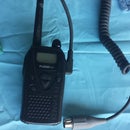Introduction: Pvc Roof Rack
Firstly, the idea to do this came from terribly overpriced roof racks.
Mostly 350.00.
After a couple of hours of looking at what Lowes had to offer I chose these.
50 ft of 3/4 inch schedule 40 sprinkler pipe, 20-3/4 "T" connectors, 8-3/4 pipe to 1/2 threaded connectors, 8 special adapters called "Universal" for disassembly, and the corners are 3/4 90 degree angle with the 1/2 threaded offset X 8, to give the roof rackyour choice of height.
Total cost 45.00.
Mostly 350.00.
After a couple of hours of looking at what Lowes had to offer I chose these.
50 ft of 3/4 inch schedule 40 sprinkler pipe, 20-3/4 "T" connectors, 8-3/4 pipe to 1/2 threaded connectors, 8 special adapters called "Universal" for disassembly, and the corners are 3/4 90 degree angle with the 1/2 threaded offset X 8, to give the roof rackyour choice of height.
Total cost 45.00.
Step 1: Measure As You Go
I built this roof rack one measurement at a time. Keep in mind that as you measure, depending on where you want to put fittings for support you will have to count the inside measurement of each fitting otherwise it will be short.
Step 2: You Won't Dent Your Roof
Put the fittings toward the edge and it will prevent denting your roof.
Do not glue anything until you have the base finished with all of fittings you will need.
Then you can stretch it to the contour of your roof after it has dried.
Once stretched to contour your car you can measure from each fitting to set the height of
the rack. Make it to your specification at this point.
Most important, leave the middle of the roof out of it, so it doesn't dent under load.
Pay close attention to these two "T" connectors. This was the best idea for doing this
project of all. By gluing them at less than a 90 degree angle to eachother when it's dry,
will bend the pipe that goes across the car on the bottom of the rack over your roof,
and not push it in.
Do not glue anything until you have the base finished with all of fittings you will need.
Then you can stretch it to the contour of your roof after it has dried.
Once stretched to contour your car you can measure from each fitting to set the height of
the rack. Make it to your specification at this point.
Most important, leave the middle of the roof out of it, so it doesn't dent under load.
Pay close attention to these two "T" connectors. This was the best idea for doing this
project of all. By gluing them at less than a 90 degree angle to eachother when it's dry,
will bend the pipe that goes across the car on the bottom of the rack over your roof,
and not push it in.
Step 3: A Nice Technique I Disovered in Process
By gluing them at less than a 90 degree angle to eachother when it's dry,
will bend the pipe that goes across the roof of the car when the top of the rack is finished.
will bend the pipe that goes across the roof of the car when the top of the rack is finished.
Step 4: Disassembleable
In the middle of the rack I have used 4 universals. This nifty design allows the rack
to be disassembled by threaded couplers and stored inside the vehicle so you have a roof rack
when you come back.
to be disassembled by threaded couplers and stored inside the vehicle so you have a roof rack
when you come back.
Step 5: Almost Done
With the nearly completed rack on the roof it should look like this.
Pipes on the lower level straight across and touching the middle of the roof, with the vertical
supports on the side canting inward. When the upper level of pipes are assembled to the proper width it will torque the middle of the lower pipe off of the roof.
Pipes on the lower level straight across and touching the middle of the roof, with the vertical
supports on the side canting inward. When the upper level of pipes are assembled to the proper width it will torque the middle of the lower pipe off of the roof.
Step 6: A Handy Alternative to Needing My Truck for Transport
Meet my 9' 6" recumbent tandem. It would take a custom rack like this
to transport my very long two seater bicycle and get the best mileage.
Without this rack I would have to put it in the back of my truck and get 18 mpg
instead of 44 mpg.
to transport my very long two seater bicycle and get the best mileage.
Without this rack I would have to put it in the back of my truck and get 18 mpg
instead of 44 mpg.
Step 7: Protect the Paint and Add Help It Grip
This is a Toyota Echo. One of the smallest cars on the road with a functional
roof top carrier you can make to fit any car for your needs.
What is not shown in these pictures is the 3/4 inside diameter heater hose.
I cut it to fit each fitting then sliced the hose down one side and glue the inside of
the hose to each fitting like a foot.
You can use a wrap to do this part, a paint on coat of rubber, something
to protect the paint on your car from the pipes.
roof top carrier you can make to fit any car for your needs.
What is not shown in these pictures is the 3/4 inside diameter heater hose.
I cut it to fit each fitting then sliced the hose down one side and glue the inside of
the hose to each fitting like a foot.
You can use a wrap to do this part, a paint on coat of rubber, something
to protect the paint on your car from the pipes.
Step 8: About 8 Hours With One Person
Duct tape will help hold the fittings in place until you are ready to glue.
I never glued too early, but if you do, instead of having to drill out the fitting to place a new pipe.
They make a fitting if you cut the one you glued on too early in half. Then cut a little bit more to count for the inside measurement of the 3/4 to 3/4 pipe fitting, then glue when your ready.
This is the first rack I made and did it successfully without gluing too early.
I did not glue until the base was finished and pressed together. If you give gluing some forethought before you glue to be gluing you will be fine. I do not believe you will be able to pull fittings apart after two minutes when you glue. It dries very aggressively.
Lastly, I found ways under the hood to attach the ratchet straps to. In the trunk there were holes in the frame to slip the hook through to ratchet the rack on the back.
Take care in your choice of where to tighten straps of the rack to your car. Your PVC frame can bend by ratcheting it down too tight.
I never glued too early, but if you do, instead of having to drill out the fitting to place a new pipe.
They make a fitting if you cut the one you glued on too early in half. Then cut a little bit more to count for the inside measurement of the 3/4 to 3/4 pipe fitting, then glue when your ready.
This is the first rack I made and did it successfully without gluing too early.
I did not glue until the base was finished and pressed together. If you give gluing some forethought before you glue to be gluing you will be fine. I do not believe you will be able to pull fittings apart after two minutes when you glue. It dries very aggressively.
Lastly, I found ways under the hood to attach the ratchet straps to. In the trunk there were holes in the frame to slip the hook through to ratchet the rack on the back.
Take care in your choice of where to tighten straps of the rack to your car. Your PVC frame can bend by ratcheting it down too tight.






